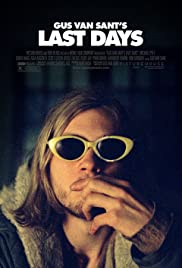
LAST DAYS
US, 2005, 95 minutes, Colour.
Michael Pitt, Lucas Haas, Asia Argento, Scott Green, Nicole Vicius, Ricky Jay, Hamni Korine.
Directed by Gus Van Sant.
As a cinematic aesthetic exercise, Last Days will fascinate cinema buffs who enjoy beautiful portrayals of the enigmatic. And it looks good as well. Others will find it tedious and, perhaps, trite in its treatment of the burnt-out star. It is in the vein of his Gerry – but makes Elephant seem hyperactive.
Van Sant has written as well as directed and declares that he has drawn from the last days of Kurt Cobain in his depiction of Blake (Michael Pitt in a well-wrought performance). Which means that we watch, often stare at length, at glimpses of a rock star in mortal decline: loss of self-confidence and the will to perform, drugs, fickle friends and hangers-on or, in the words of his final song, ‘it’s a long, lonely journey from death to birth’.
While van Sant wants to offer a tribute-interpretation of artists like Cobain, the world he offers is a mixture of grunge and nihilism that seems hopelessly depressing. Peggy Lee, long before, sang ‘Is that all there is?’
1. An aesthetic cinema work? The content? The interplay of the two?
2. The work of Gus Van Sant, style, perspectives? An interpretation of the last days of Kurt Cobain?
3. The New York State settings, the woods, the mansion, the interiors of the house, the town, the club? The combination of wealth and squalor?
4. The rock music background, the soundtrack, the selection of songs, especially ‘The Long Lonely Journey from Death to Birth’?
5. Kurt Cobain and the burnt-out careers of rock stars: fame, audience, applause, exhaustion, mental and moral breakdown, physical breakdown? The heritage of the music? What remains after the collapse?
6. Celebrities, agents, audiences, record companies and agents, concerts, friends, hangers-on?
7. The visual style, the long takes, the sparse dialogue? The episodic nature of the film, especially the visit of the Yellow Pages man, the Mormons, the visit to the club? Blake talking to himself, singing to himself?
8. The scenes resembling his mental state, repetitions, his knowing what was going on, not knowing, memories, memory loss? Individuals appearing and disappearing?
9. The opening in the woods, the choral background, the walk, the swim, sitting by the fire? The return to the house, breakfast, his getting meals during the days? Ignoring the phone? The people in the house, Scott and Asia? The visit of the Yellow Pages man, the conversation, his being out of it? Wandering, passing out in the house, avoiding Donovan (twice)? Back into the woods, playing, singing, listening to Lucas and his pitch, going into town, the conversation in the club, going to the tool house to die? The image of his death, his coming out of himself, climbing to heaven? The final realism of the police arriving, taking away his dead body?
10. Scott and Asia, sleeping in the house, interactions with Blake? Scott and his conversations? Lucas, in himself, the sexual liaison? In Blake’s mind or imagination? His discussion about his sexual experiences, the song, wanting Blake to help with the lyrics? Nicole and the other visitors? Scott and the visit of the Mormons, their explanation? The scenes of eating, sexuality, the coming and going in the car? Friends or not?
11. The drive with Donovan, the detective, the discussions about Blake, looking around the house, his avoiding them?
12. The Yellow Pages man, his earnest pitch? The Mormons and their pitch? The significance of these episodes for Blake, for the others? Blake’s conversation with the man in the club?
13. The particular world or universe that Blake inhabited? Questions of identity, existence, life and death?
14. The film illustrating the song, ‘The Long Journey from Death to Birth’?